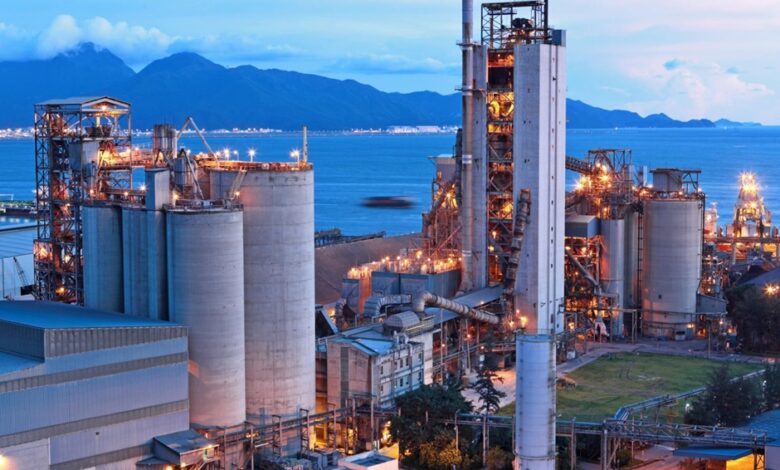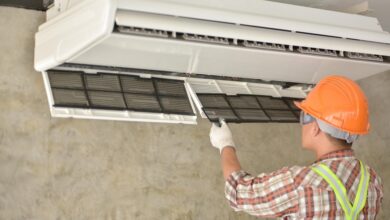Essential Industrial Cleaning Tips for a Healthier Worksite

Industrial work environments are no stranger to dirt, grime, and other types of industrial waste. However, when overlooked, these contaminants can have serious consequences for not only the workspace but also the health and well-being of employees. This is where the importance of industrial cleaning comes into play.
In this blog post, we bring you essential industrial cleaning tips to help you create a healthier, safer environment for your employees. Read on.
Develop a Customized Cleaning Plan
Every industrial worksite is different, with unique hazards, layouts, and operations. A generic cleaning plan won’t work for all. Start by evaluating your specific environment to build a cleaning regimen tailored to your facility’s needs.
Conduct a site-wide inspection to identify which zones require daily, weekly, or monthly attention. Define zones by risk levels:
- chemical areas
- high-traffic walkways
- sensitive equipment zones
- etc..
Each of these will need different cleaning methods and schedules. Include input from supervisors, safety officers, and maintenance staff to build a practical and realistic routine.
Key actions:
- List all zones with cleaning frequency
- Assign roles to the responsible staff
- Schedule during low-activity periods
- Review and update the plan quarterly
Focus on High-Touch Surfaces and Common Areas
In industrial environments, germs and contaminants often spread through touchpoints. These include areas and items that workers come into contact with frequently-creating hotspots for bacteria and viruses.
Daily disinfection of high-touch areas is non-negotiable, especially in a post-COVID-19 world. Using quick-dry disinfectant sprays and wipes can help reduce downtime and eliminate pathogens effectively. Create a checklist for janitorial staff to verify these spots are cleaned each shift.
Key areas to disinfect:
- Light switches, buttons, and door handles
- Control panels on machinery
- Time clocks and punch-in stations
- Break room tables, microwaves, coffee machines
- Locker room benches and sinks
Invest in Industrial-Grade Tools and Equipment
The sheer scale and dirt intensity in industrial sites require heavy-duty cleaning tools. Traditional vacuums or mops won’t suffice. Specialized cleaning machines allow faster, more thorough results while reducing labor intensity and exposure risks.
For instance, ride-on floor scrubbers are ideal for large warehouses, while HEPA-filter vacuums are essential for sites where fine dust is present. Steam cleaners can sanitize surfaces without chemicals, making them a great choice for food or pharmaceutical facilities.
Essential equipment includes:
- HEPA vacuums for small particles and allergens
- Pressure washers for tough grime or exterior surfaces
- Ride-on floor scrubbers for large floors
- Steam cleaners for sanitation-sensitive zones
- Industrial degreasers for machinery and parts
Maintain Ventilation and Air Quality
Airborne contaminants are one of the most overlooked yet serious health hazards in industrial workplaces. Welding fumes, chemical vapors, dust, and exhaust can all compromise indoor air quality, resulting in long-term respiratory issues or acute reactions.
Good ventilation supports a healthier worksite by continuously circulating and purifying air. HVAC systems should be cleaned and serviced routinely, and airflow must be monitored to ensure it complies with safety standards.
Improve air quality by:
- Installing fume extraction systems
- Using carbon and HEPA air filters
- Keeping ducts clean and unobstructed
- Ensuring exhaust fans are working properly
- Monitoring indoor air with sensors
Handle Chemicals with Care
Chemical cleaning agents are often necessary in industrial environments, but they come with risks-skin burns, respiratory issues, and even explosions if handled improperly. Maintaining strict protocols for chemical use can prevent dangerous incidents.
Every chemical used should have a corresponding Material Safety Data Sheet (MSDS) that workers are familiar with. PPE must be provided and worn correctly, and emergency eyewash stations or showers should be installed near chemical use zones.
Safe chemical practices include:
- Storing chemicals in labeled, ventilated cabinets
- Keeping incompatible chemicals separated
- Training all staff on spill response procedures
- Logging all chemical usage and purchases
Deep Clean Regularly
Routine cleaning keeps things presentable, but deep cleaning tackles the underlying issues that accumulate over time. Built-up grime on machinery, dust in ductwork, and grease in hard-to-reach areas can cause wear, corrosion, and even fire risks.
Deep cleaning should be scheduled monthly or quarterly, depending on the type of work done at your site. This process might require dismantling equipment, temporarily halting production, or hiring a professional cleaning service. Check out koorsen indianapolis to learn more about deep cleaning.
Key areas to deep clean:
- Beneath heavy equipment
- Behind production lines and along conveyor belts
- Walls, ceilings, and lighting fixtures
- Drainage systems and ventilation hoods
- Waste disposal areas and dumpsters
Provide Proper Training and PPE
Cleanliness and safety go hand in hand. Staff involved in cleaning activities should be trained not only in how to clean, but how to clean safely. From handling biohazards to operating industrial vacuums, training is essential to avoid injury or regulatory violations.
Training programs should include hands-on instruction, safety drills, and refresher sessions. Provide PPE based on task requirements-gloves, goggles, respirators, hearing protection, or chemical suits.
Training should cover:
- Safe operation of cleaning machines
- Proper PPE usage and disposal
- Chemical safety and spill response
- How to clean around active machinery
Prepare for Spills and Emergencies
Emergency preparedness is key in high-risk environments. Whether it’s an oil spill, chemical leak, or contaminated water source, having the right spill containment plan in place can prevent small incidents from turning into disasters.
A proper spill response includes:
- identifying the hazard
- containing the spread
- safely cleaning the mess
Emergency kits should be easily accessible and include absorbent pads, booms, neutralizers, and PPE.
Readiness checklist:
- Install spill kits in all high-risk zones
- Post emergency response plans visibly
- Designate and train spill response teams
- Conduct mock spill drills quarterly
Quick containment minimizes exposure and downtime while keeping your facility in compliance.
Document and Audit Cleaning Practices
Thorough documentation isn’t just for compliance-it’s also a smart way to identify weak spots and improve procedures. Keeping detailed logs of when, where, and how cleaning tasks are completed helps ensure consistency and accountability.
Use digital checklists or facility management software to streamline record-keeping. Include notes about cleaning products used, inspection results, and any incidents or maintenance alerts observed during cleaning.
Track and audit:
- Daily and weekly cleaning logs
- Equipment servicing schedules
- Inspection results and corrective actions
- Staff training and PPE use records
Start Cleaning Your Workplace Today
In conclusion, using these essential industrial cleaning tips can greatly improve the overall health and safety of any worksite. By maintaining a clean and organized environment, employees can work more efficiently and be less susceptible to illnesses.
Don’t wait any longer, take action and create a healthier worksite for your team. Start implementing these tips today for a better tomorrow!
If you want to read more articles, visit our blog.
